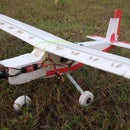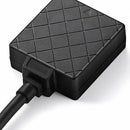Introduction: Blinking Into DIY Electronics With Arduino
For hardware enthusiasts, Arduino Blink is essentially a digital "Hello World!" The onboard LED needs to be programmed to blink on and off at a predetermined interval using an Arduino microcontroller. The foundation for understanding programming, circuit design, and hardware interaction is laid by this easy project.
Supplies
To embark on your Arduino Blink journey, you'll need the following:
2) USB cable for connecting Arduino to computer
3) Arduino IDE
4) LED
5) Resistor
6) Breadboard
Step 1: Connect LED to Arduino
Connect LED with Arduino Board as shown in circuit
Step 2: Connect Arduino Board With PC
Step 3: Upload Code
void setup() {
// initialize digital pin LED_BUILTIN as an output.
pinMode(LED_BUILTIN, OUTPUT);
}
void loop() {
// turn the LED on (HIGH is the voltage level)
digitalWrite(LED_BUILTIN, HIGH);
// wait for a second
delay(1000);
// turn the LED off by making the voltage LOW
digitalWrite(LED_BUILTIN, LOW);
// wait for a second
delay(1000);
}
Step 4: See the Blinking LED
Once uploaded, the Arduino board will start running the Blink sketch.
The LED connected to pin will blink on and off at a default rate.
Step 5: Customize Blink Rate
In the Blink code, you can modify the delay values to change the on and off durations, customizing the blink rate.













